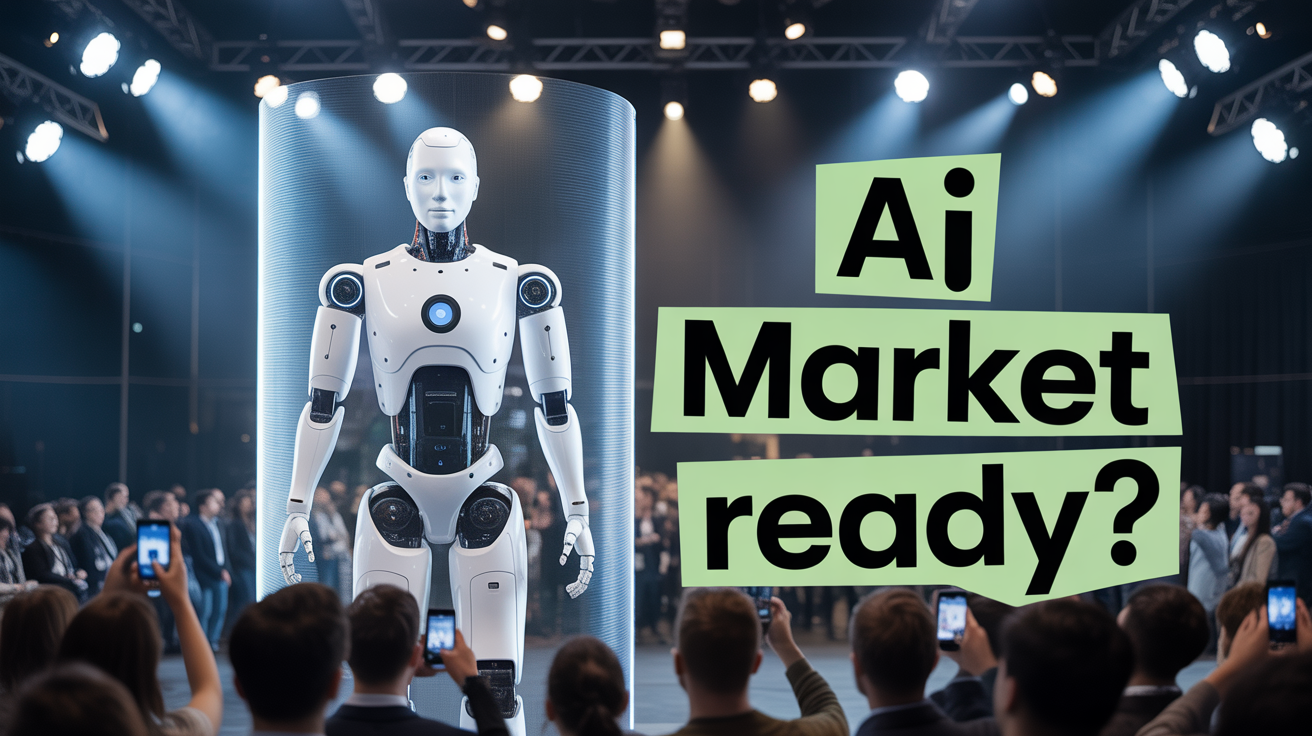

Quantum AI isn’t hype—it’s changing money and medicine right now.
From high-stakes risk modeling on Wall Street to molecular simulations in oncology labs, Quantum AI is moving from research into production. By combining quantum algorithms with modern machine learning, organizations are accelerating financial analytics and drug discovery pipelines that once took months into hours.
In this analysis, we break down how Quantum AI is transforming two high-impact domains: finance (quantum Monte Carlo, portfolio optimization, risk analytics) and drug discovery (quantum chemistry, VQE, molecular simulation). You’ll see where value is real today, what’s next, and how leaders are preparing.
Quantum Finance
Amplitude estimation, VaR, and portfolio optimization with measurable speedups
Drug Discovery
VQE-based chemistry, protein folding insights, and faster molecule screening
Security
Post-quantum cryptography to protect sensitive models and pipelines
How Quantum AI Actually Works
Quantum algorithms leverage superposition (evaluate multiple states at once), entanglement (non-classical correlation), and interference (amplify right answers) to explore vast state spaces more efficiently than classical methods. In finance, this means faster sampling and optimization; in drug discovery, more accurate molecular energy estimation. Hybrid (quantum + classical) workflows pair parameterized quantum circuits with gradient-based or heuristic optimizers to deliver near‑term gains on today’s NISQ hardware.
Core Building Blocks
- • Amplitude Estimation: quadratic speedup for mean/variance estimation
- • Variational Circuits: parameterized ansätze trained via classical loops
- • QAOA: approximate optimization on discrete/combinatorial problems
- • Error Mitigation: ZNE, readout calibration, symmetries
Where Hybrids Win
- • Sampling Bottlenecks: VaR/CVaR tails, Greeks, scenario analysis
- • Search Bottlenecks: route/portfolio selection with hard constraints
- • Simulation Bottlenecks: many‑body molecular energies and pathways
Quantum Finance: Risk, Pricing, and Portfolio Optimization
Financial institutions are piloting Quantum AI for Monte Carlo risk analytics, derivatives pricing, and asset allocation. Quantum Amplitude Estimation provides a quadratic speedup over classical sampling, improving Value-at-Risk precision, while QAOA and annealing target combinatorial portfolio construction under constraints.
Where to Apply First
- • VaR/CVaR: tail estimation at 99–99.9% confidence
- • Credit Risk: correlated default modeling on large books
- • Path‑Dependent Options: barrier, Asian, and lookback pricing
Objective Examples
min_x x^T Σ x − λ μ^T x \n s.t. 1^T x = 1, x ≥ 0, sector/ESG constraintsEncode constraints via penalty terms or mapped to QUBO for QAOA/annealers.
Case Study: Monte Carlo with Amplitude Estimation
Pilots show ~100x sampling reduction for VaR/CVaR estimation; early studies indicate 15–25% accuracy improvements for tail risk in stress scenarios.
See efforts by JPMorgan and Goldman Sachs.
For real-time decisioning and optimization context, review our coverage on Agentic AI and the broader Quantum Leap landscape.
Quantum Drug Discovery: Chemistry, Folding, and Screening
VQE enables accurate ground‑state energy estimation in hybrid loops, improving binding predictions and reaction pathways. Ansatz choices (hardware‑efficient vs chemistry‑informed) and encodings (Jordan–Wigner, Bravyi–Kitaev) affect depth and accuracy. Research in Nature has validated near chemical‑accuracy on select systems, while industry collaborations are building pipelines from simulation to candidate prioritization.
Typical Hybrid Loop
- • Map Hamiltonian (second‑quantized) → qubit ops
- • Prepare parameterized ansatz |ψ(θ)⟩ on QPU
- • Measure ⟨ψ(θ)|H|ψ(θ)⟩, update θ on CPU
- • Mitigate noise (ZNE, symmetry checks)
Targets & Readouts
- • Binding energies, ΔG‡ barriers, reaction coordinates
- • Solvation effects via continuum models (ddCOSMO)
- • QM/MM coupling for active site accuracy
Case Study: Hybrid VQE Pipeline
Active-space VQE + classical optimizers + error mitigation achieved energy barriers with ~2% agreement to experiment, accelerating candidate screening.
For deeper quantum fundamentals across industries, see our analysis on The Quantum Leap.
Security & Compliance: PQC for Sensitive Workflows
As financial and clinical data flows through quantum-enhanced pipelines, organizations must adopt post-quantum cryptography (ML-KEM/ML-DSA/SLH-DSA) and crypto-agility practices. Major cloud providers are rolling out PQC support; regulators increasingly expect migration plans this decade.
Controls to Prioritize
- • Hybrid TLS (classical + PQC) for data in transit
- • PQC KEM for key exchange; hash‑based signatures
- • Crypto inventory & agility (rotate, revoke, replace)
Risk Notes
- • “Harvest‑now, decrypt‑later” threat to archives
- • Vendor lock‑in vs portability for QPU backends
- • Model governance for high‑stakes decisions
Roadmap (2025–2030) & What Teams Should Do Now
- 2025–2026: Pilot amplitude estimation and VQE on targeted problems; establish PQC migration plans.
- 2027–2028: Expand hybrid pipelines; measure production KPIs (latency, accuracy, cost).
- 2029–2030: Integrate with decision systems; scale to regulated, cross-domain workloads.
People
- • Upskill quants/chem‑informatics on quantum toolchains
- • Create hybrid teams (ML + quant + QC)
Platform
- • Unified data + feature stores + lineage
- • Multi‑QPU access (gate‑based + annealing)
Process
- • KPI baselines vs classical, A/B experiments
- • Model governance & regulatory readiness
Invest in skills (quantum programming, error mitigation), reproducible pipelines, and multi‑vendor partnerships to accelerate readiness and reduce risk.
Enterprise Adoption Playbooks & KPIs
Winning programs treat Quantum AI as a measured capability build, not a moonshot. Use staged playbooks, A/B benchmarks, and risk controls to turn pilots into production.
Playbook (Finance)
- • Scope VaR/CVaR + 1 options family for AEstimation
- • Compare wall‑clock, samples, error vs classical
- • Integrate with stress scenarios + backtesting
Playbook (Biopharma)
- • Select 1–2 targets; define active space windows
- • VQE baselines vs DFT/CCSD(T) where feasible
- • Rank candidates; verify with wet‑lab/MD follow‑ups
KPIs
- • Runtime (p95), sample count, energy error (kcal/mol)
- • Capital efficiency: VaR error vs compute spend
- • Uplift: hit‑rate/precision in candidate triage
For adjacent strategies, see Edge Computing for low‑latency integrations and Quantum AI foundations.
The Bottom Line: Real Value Today, Larger Gains Ahead
Quantum AI is delivering practical advantages in finance and drug discovery through hybrid algorithms that outperform classical-only approaches on targeted problems. Early adopters are building measurable advantages while preparing for fault-tolerant horizons.
Key Takeaways
- • Finance: AEstimation + QAOA show early wins in risk and allocation
- • Biopharma: VQE pipelines accelerate screening with credible accuracy
- • Security: PQC migration is a parallel must‑do
Next Actions
- • Stand up 1–2 pilots per domain with clear KPIs
- • Build talent pipelines + vendor ecosystem
- • Baseline vs classical and report ROI quarterly
Subscribe to DecodesFuture for weekly insights on Quantum AI, finance transformation, and next‑gen drug discovery.
Share this article:
Related Articles
Continue exploring the future

The Quantum Leap: How Quantum Computing is Revolutionizing Industries
Explore how quantum computing is transforming drug discovery, financial modeling, and cryptography.

Quantum AI: How Quantum Computing Will Supercharge Autonomous Intelligence
Explore how quantum computing technologies are revolutionizing autonomous intelligence systems with advanced quantum algorithms, neural networks, and real-world applications in 2025 and beyond.

Humanoid AI & Robotics: Market Readiness 2025–2030
Explore how humanoid AI robots are transitioning from research labs to commercial markets, with breakthrough technologies and real-world applications reshaping industries by 2030.
Loading comments...